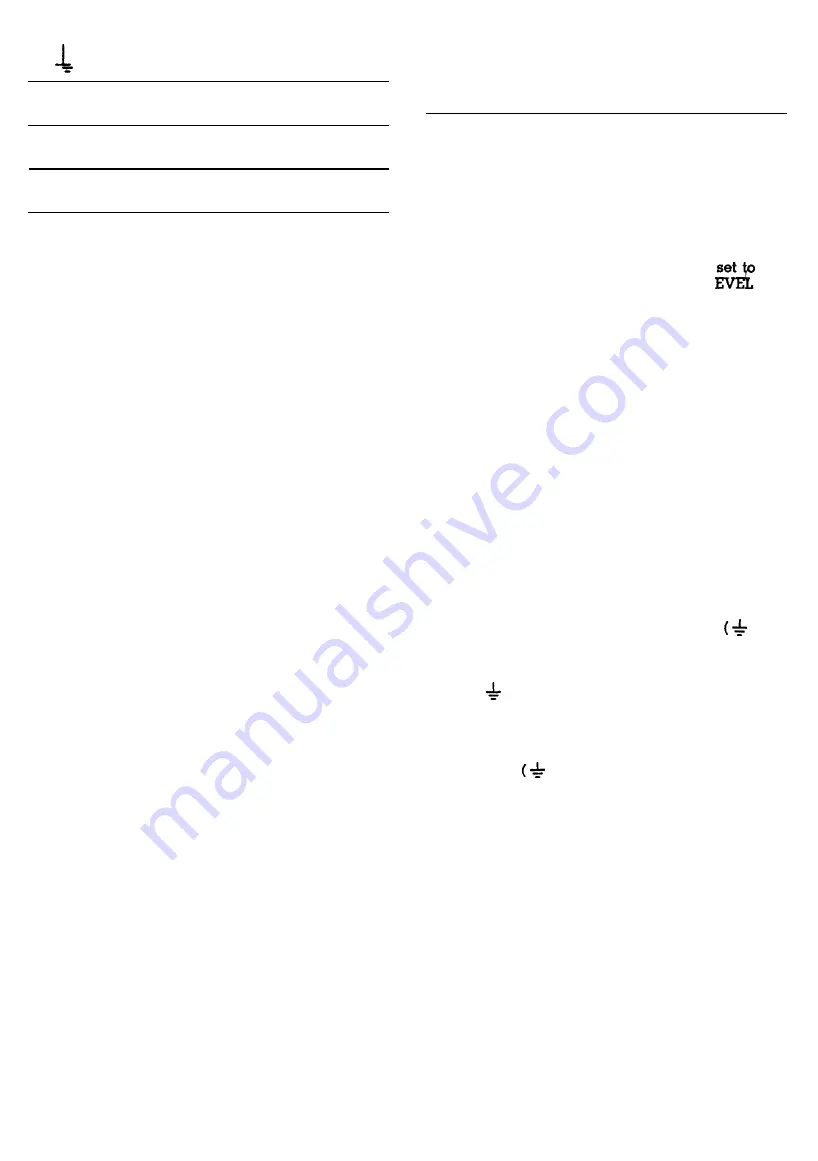
8
terminal
9 + terminal
Earth and chassis ground
terminal.
Positive polarity output ter-
minal.
10 -
terminal Negative polarity output
terminal.
11
voltmeter Indicates power supply out-
put voltage.
12
1.
2.
3.
4.
METER RANGE
switch
0-50V position Selects full scale range of
50 volts for voltmeter 11
0-25V position Selects full scale range of
25 volts for voltmeter
1 1
13 LEVEL control Turns off power supply at
extreme counterclockwise ro-
tation. Clockwise rotation
turns on power supply and
adjusts output voltage (volt-
age output level is not
changed by the METER
RANGE switch 12 ). Also,
prevents METER RANGE
switch from being set
O-25
V position when L con-
trol is advanced beyond ap-
proximately 25 volt output.
OPERATING INSTRUCTIONS
Turn off the power supply before plugging it
into an ac outlet. Turn off by rotating the LEVEL
control
13
fully counterclockwise until it
“clicks” off.
5. Set the “STBY-DC ON” switch
7
to the STBY
position while connecting the test leads.
Connect the power cord to a 105-125 volt 60 Hz
ac outlet.
6. Connect the power supply output to the device
being powered with test leads as follows:
a. Connect the positive polarity input of the
device being powered to the (+) terminal
WARNING
9 of the power supply.
Use only a polarized 3-wire outlet. This
assures that the power supply chassis is
connected to a good earth ground and pre-
vents danger from electrical shock. If a
2-wire to 3-wire adapter must be used, be
sure the ground wire of the adapter is
attached to a good earth ground.
Turn on the power supply by rotating the
LEVEL control 13 slightly clockwise past the
“click”. The POWER indicator 6 will light.
Determine the maximum safe load current for
the device to be powered and set the current
limit for that value as follows:
b. Connect the negative polarity input of the
device being powered to the (-) terminal
10 of the power supply.
C.
If the positive polarity of the device being
powered is also to be ground reference,
jumper the (+) terminal 9 to the
) ter-
minal 8
.
If the negative polarity of the
device being powered is to be ground ref-
erence, jumper the (-) terminal 10 to the
( ) terminal 8
.
If neither the positive nor
negative polarity of the device being pow-
ered is to be grounded, but the chassis of
the device needs grounding, connect a sep-
arate test lead from the chassis of the device
to the
) terminal 8 of the power supply.
a.
b.
C.
d.
Set the coarse current limit with the CUR-
RENT RANGE switch 2 . When possible,
select a range that provides the desired cur-
rent limit at a value above 20% of the full
scale reading.
7. Return the “STBY-DC ON’ switch 7 to the
DC ON position and set the output voltage as
follows:
Push and hold the set/reset button 4 while
a. Set the METER RANGE switch 12 to the
making fine current limit adjustment with
0-25V position if the output voltage is to be
the SET CURRENT LIMIT control 3 for the
set for 25 volts or less, or to the 0-50V posi-
desired current limit as read on the current
tion if the output voltage is to be set for
meter
1 .
more than 25 volts.
Release the set/reset button 4 .
If the maximum safe load current is un-
known, start with a low current limit setting.
If the setting is too low, the overload circuit
will merely trip when power is applied to
the load in steps 7 and 8. If so, increase the
current limit setting in small steps until the
overload circuit does not trip during normal
operation.
b. Turn LEVEL control 13 clockwise until the
desired output voltage is read on the volt-
meter 11 .
8. If the load current exceeds the current limit, the
OVERLOAD lamp 5 will light and the power
supply will shut down (the current meter 1
and voltmeter 11 will drop to zero). Restore
the power supply to normal operation as
follows:
and prevents LEVEL control
13
from increasing the
voltage above approximately
25 volts.
































